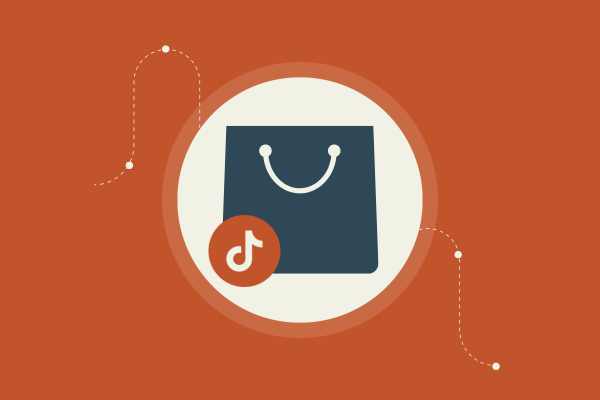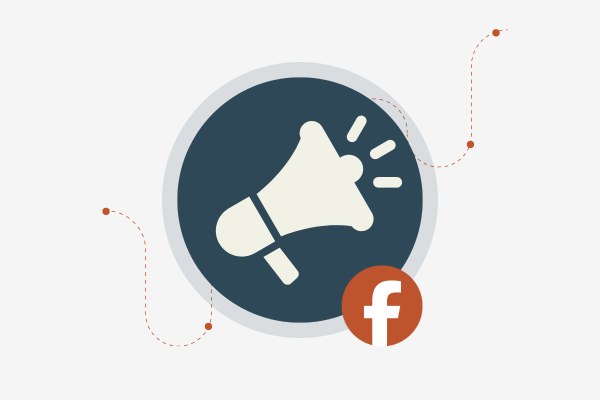What’s a Healthy COGS Percentage for Your eCommerce Business? Find Profit!
In the wild world of eCommerce, you need to keep an eye on your costs. The Cost of Goods Sold (COGS) can make or break your business's profitability. A healthy COGS percentage for an eCommerce business typically falls between 25% and 75% depending on the industry and business model. You're playing a balancing act; too high and you're bleeding money, too low and you might be undervaluing your products.
Think of COGS as the foundation of your financial health. It’s essential to figure out your COGS accurately to understand the real cost behind every sale you make. This number not only affects your profit margins but also helps create a pricing strategy that makes sense.
Manage these costs wisely, and you're on the path to scaling success. Embrace tech tools to streamline your inventory and cost management. This will save you time and lead to smarter financial decisions.
Key Takeaways
Keep COGS between 25% and 75% for healthy profit margins.
Accurate COGS calculation is crucial for financial health.
Use tech tools to optimize and manage COGS effectively.
Understanding COGS in Ecommerce
When running an ecommerce business, knowing your Cost of Goods Sold (COGS) is crucial. It impacts your profits and pricing.
Breaking Down COGS
COGS is all about knowing what it costs to make what you sell. This includes inventory costs, which cover every step from raw materials to finished products. Don’t forget direct costs like labor for making the product. Part of this is packaging and shipping costs, which also eat into your margins.
To get the full picture, calculate everything. Add up raw materials, labor, packaging, and even shipping. Be thorough. This comprehensive view lets you see where your money’s going. Tweaking the COGS means you can bump up profits without hurting sales.
Ecommerce Accounting Basics
Managing the books? You need to lock in your accounting methods. You might choose between cash and accrual accounting. Each affects how you report COGS.
In cash accounting, your COGS shows up only when cash changes hands. But in accrual, COGS and sales are recorded when they happen.
Accuracy is key. Get this wrong, and your profit calculations will mislead you. Use consistent methods to figure out your COGS. This isn’t just about crunching numbers; it's about setting prices that keep you in the black.
Calculating Your COGS
Knowing your Cost of Goods Sold (COGS) is key to managing your eCommerce business effectively. It helps you determine how much you're spending on products, inventory, and logistics, which directly impacts your profitability.
COGS Formula
Let's break down the COGS formula. It's simple but crucial:
[ COGS = (Beginning Inventory + Purchases) - Ending Inventory ]
Start with the stock you had at the beginning of the period. Add in what you bought during that time. Finally, subtract what you have left at the end. This gives you your COGS.
You can include costs like inventory cost, freight, and product cost. Exclude anything unrelated to purchasing or producing the products.
Accrual vs. Cash Accounting
Choosing between accrual and cash accounting affects your COGS. With accrual accounting, you record transactions when they occur.
Cash accounting, though, only records when money actually moves.
Accrual accounting gives a more accurate picture of your financial health. You might pay for a shipment in March but record it in February. It helps match your income and expenses accurately.
For COGS calculation, accrual is often preferred. It reflects your real-time inventory, freight, and labor expenses without waiting for cash to change hands.
Inventory Management Techniques
Managing your inventory is like keeping your business engine running smoothly. Techniques like FIFO (First In, First Out) and LIFO (Last In, First Out) come into play.
FIFO means selling the oldest stock first. It often matches the actual flow of goods in a warehouse. LIFO is the opposite, using up new inventory first.
Pick an inventory management system that works for your business. A good system tracks your inventory cost efficiently and ensures you never overstock or run out of key products.
Remember, keeping your inventory costs in check means healthier COGS, and healthier profits.
COGS' Impact on Profitability
Understanding the impact of your Cost of Goods Sold (COGS) is crucial for maintaining a healthy eCommerce business. It directly affects your profit margins and ultimately your bottom line. Let's break it down.
Analyzing Gross Profit Margin
This is where your COGS meets your revenue. You take your total sales and subtract your COGS. The number you get is your gross profit. This is a key player on your income statement because it tells you how well your business is performing.
The gross margin is another term you’ll hear often. It’s your gross profit divided by sales revenue, expressed as a percentage. A higher gross margin means you keep more pennies from each dollar you earn. Keep an eye on it. It's your business heartbeat.
Now, if your COGS is high, your gross profit margin shrinks. That’s a problem. It means less money for rent, salaries, and the fun stuff like reinvesting or marketing. You want to optimize your COGS to keep your gross margin in a healthy zone.
Net Income and Profit Margins
After you calculate your gross profit, you need to consider your operating expenses. These include all costs that are not directly tied to production, like rent or wages.
Subtract COGS and expenses from your revenue, and you get your net income. That's the number that really matters at the end of the day. It's taxed, shared with investors, or reinvested into your business.
Keep an eye on your profit margins. This is your net income divided by revenue. It helps track how much actual profit you're squeezing out of every dollar earned. A low net profit margin means high expenses or COGS taking a big bite out. Lower COGS could lead to a lower taxable income, boosting your bottom line.
Dialing in your COGS helps increase your profits. Keep tweaking and analyzing to stay on top of the game.
Strategies to Optimize COGS
To get more from each dollar, you need to be smart with what you buy, pay less for labor, and get better deals from suppliers. Implementing these strategies can help you reduce COGS and push your profits higher.
Smart Inventory Purchasing
Buy smart, not just often. Look for opportunities to buy in bulk. Bigger orders often mean better prices. Get the most out of these deals by keeping an eye on what's selling fast. This way, you don't stock up on stuff that just sits there.
Clear out old inventory with great pricing strategies. Offer discounts to move products quickly. When stock is low, you're not doing inventory storage costs any favors. So keep an eye on trends and plan your purchases. Figure out when buying more can mean saving more.
The goal? Always have just enough. Not too much, not too little.
Reducing Labor and Production Costs
Cut the fat, not the muscle. Lean operations are key. Streamline processes to eliminate wasted time. Every second counts. Focus on direct labor costs. Train your team to work efficiently but not carelessly.
Invest in technology that automates repetitive tasks. Machines don't call in sick. This can free up time for your team to focus on bigger, revenue-driving tasks.
Look for tools that offer cost-saving opportunities. Technology can boost your bottom line when used right. When production gets faster and cuts wasted time, reducing labor costs happens naturally.
Negotiating with Suppliers
Suppliers are your partners, not enemies. Negotiate like a pro. Ask for bulk discounts — they stack up over time. Even small savings add up when you’re dealing with large volumes.
Build strong relationships. Good suppliers will want to keep your business. Competitive pricing and flexible terms are big wins.
Stay updated on market prices. Leverage this knowledge in talks. Be prepared to walk if offers don’t meet your needs. Remember, it's not just about the price tag. Quality and delivery times matter. Secure the best deals for your business and keep your COGS under control.
Leveraging Technology for COGS Management
Technology is your best friend when managing your Cost of Goods Sold (COGS). It streamlines everything from tracking inventory to analyzing sales data. Get smart with software and platforms that keep your COGS in check, helping you boost profits.
Inventory Management Software
Say goodbye to manual inventory tracking. With inventory management software, you can keep a close eye on what’s in stock. It updates in real-time, showing you inventory quantities across every SKU. This keeps you from overbuying or running out of stock.
These tools integrate with your sales channels. You’ll know which products are flying off the shelves and need a restock. Inventory management allows you to adjust orders and fine-tune your purchasing decisions. It's like having eyes everywhere.
A2X and similar platforms help manage your inventory and maintain accuracy with accrual accounting. This method provides a clear picture of costs and profits, free from guesswork.
Ecommerce Platforms and COGS Tracking
Ecommerce platforms take COGS tracking to another level. They connect to your storefront and pull in all sales data. You’ll see the costs associated with each product sold and spot trends quickly.
These platforms help you analyze margins and adjust pricing strategies. Some even let you set alerts for when costs spike, so you're never caught off guard. Keep tabs on each sales channel to understand where profits are growing or shrinking.
With these tools, you’ll find hidden efficiencies and cut unnecessary costs. That means more money in your pocket, just by keeping an eye on the numbers.
Scaling Your Ecommerce Business
To scale your ecommerce business, focus on two key areas: increasing sales volumes and expanding where you sell. These strategies can help boost revenue and maintain healthy profit margins.
Boosting Sales Volume
Focus on increasing how many products you sell. First, review your product pricing. Are your prices competitive enough to attract buyers while still giving you a solid profit? Adjust your pricing strategy if necessary.
Next, crank up your marketing efforts. Boost your ad spend wisely. Make sure every dollar brings in more customers. Keep an eye on your marketing costs to prevent overspending.
Also, check your cash flow management. More sales can mean more expenses, so ensure you have enough to cover costs. Don’t run dry.
Sales tax can also eat into profits. Stay on top of it. Avoid surprises.
Diversifying Sales Channels
Having multiple places to sell is like having a safety net. It reduces risk and can drive more sales.
Consider platforms beyond your own website. Amazon and eBay, for example, reach millions. Each sales channel comes with its own rules, so learn them. Adapt your approach to fit each one.
Monitor performance on different platforms. See where your products do best. This helps refine where you should focus more efforts.
Sales tax rules change with every channel. Know them to keep things smooth.
Expanding doesn’t mean losing focus. Keep your eyes on your main goals while exploring new opportunities. Stay agile and adjust your strategy based on results.
Maintaining Healthy COGS Ratio
Keep your COGS in check to boost profits. Focus on regular reviews and minimizing overhead to keep things lean and mean.
Regular COGS Review
You gotta know your numbers. Regular reviews of your COGS can make a big difference. Calculate COGS by tracking inventory costs against revenue.
Break it down – all your materials, labor, and anything else tied to production. A detailed check helps catch leaks in your system.
Track these reviews monthly. This helps you respond quickly to any changes. Regular analysis ensures you’re not spending too much without realizing it. No surprises means more control over profitability.
Key points:
Consistent checks
Detailed tracking
Monthly analysis
Staying Ahead of Overhead
Overhead costs can creep up on you. Keep tabs on warehousing and storage costs. They add up fast.
Think about payroll, too. Efficient staffing can cut costs without hurting productivity.
Monitoring these expenses is crucial. You wanna keep overhead lean to maintain a healthy COGS ratio. Streamlining operations with smart tools can help reduce unnecessary spending.
Regular expense reviews will highlight where to trim the fat. Look at contracts for warehousing and ask yourself if you can negotiate better rates.
Key points:
Keep storage costs low
Optimize payroll
Regularly review expenses
Communicating with Stakeholders
When you're running an eCommerce business, keep your stakeholders in the loop. It's not just about sending reports. It’s about sharing insights and strategies. You want them to feel confident in your business decisions and trust your direction.
Investors and Financial Reporting
Investors care about the numbers. They need to see the financial performance to ensure their investments are safe.
Show them clear reports on net profit, cost of goods sold (COGS), and cost of sales. Use charts or tables for clarity.
Being upfront with investors builds trust. Give them reasons to feel excited about your growth.
Share how you plan to improve COGS. Highlight where you’re cutting costs or boosting profits.
If your investors see strong potential, they’re more likely to continue supporting you.
Keep it all straightforward. Avoid jargon. Make it easy for anyone to grasp.







